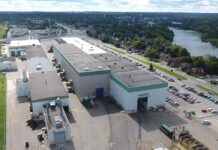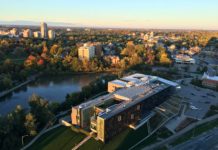Every year, thousands of students stream into Waterloo Region’s postsecondary institutions, carrying books, laptops and increasingly global ambitions.
The question is, where will those ambitions take them? If they are technically brilliant and highly motivated, Silicon Valley will beckon – and it has little to do with California weather.
With a population of about three million, the San Francisco-to-San Jose corridor has the greatest concentration of tech jobs in the United States, is home to firms worth trillions, accounts for almost half of all U.S. venture capital investment, and embraces talented immigrants who make up one-third of its scientists, engineers, entrepreneurs and startup founders.
Similar forces are at work in cityregions such as London-Cambridge and Tel Aviv-Haifa, where dense tech ecosystems have disproportionately shaped the innovation performance of their countries.
These innovation corridors share key attributes: an entrepreneurial culture where geeks are gods, deep talent pools, great research universities, abundant risk capital, scalability of innovations and the brand power to continually refresh themselves with global capital and talent.
Also, the co-location of startups and large, established firms in a single region gives early-stage companies access to big-name customers, while large companies benefit from the culture of experimentation and nimble thinking of high-growth startups.
So, where does this leave us?
While Canada is home to globally competitive tech hubs including Toronto, Vancouver, Montreal and Waterloo, only one region – the Toronto-Waterloo corridor – carries the potential to answer Silicon Valley, and significantly move the needle on Canada’s economy.
With strong research universities and technical colleges, a major international airport, population density (more than six million), vibrant immigration and entrepreneurial culture, Toronto- Waterloo already has many ingredients essential to building such an ecosystem in Canada.
We are already home to 30 per cent of Canada’s university students and 21 per cent of the country’s population as well as the majority of its corporate headquarters, industry-led R&D spending and venture capital.
But building an innovation ecosystem capable of driving national growth also requires an intensive interplay among world-class research, targeted government support for technology development, industry R&D, venture capital and astute early adopters of homegrown technology.
That’s where thinking bigger comes in.
It’s tempting to look to Silicon Valley and assume all we need to do is produce more startups and attract more capital. But first, we need to better understand what led to Silicon Valley’s status as the world’s premier innovation engine.
That engine was fuelled with massive government research investments to develop technology, initially for military applications. Steve Blank, the noted entrepreneur, academic and Silicon Valley historian, has credited these investments – and one professor’s determination to secure a share of them for Stanford University – for laying the foundation of what we see today.
That professor, Frederick Terman, lured top scientists to create a talent hub that drew successive rounds of government investment, and in turn, more talent. Terman and his colleagues encouraged students to start companies, mentored them and personally invested in their startups. Their groundwork led to the rise of Hewlett Packard, Fairchild Semiconductor, Intel, Apple and Google, to name a few.
Within the Toronto-Waterloo corridor, we produce such superb technical talent, creative ideas and intellectual property that tens of thousands of our graduates work in Silicon Valley or Seattle or L.A., while others have opted to stay in Canada, or return from abroad to start companies.
Canadian entrepreneurs have shown they can build game-changing technology here at home, but too often, these successes have been in spite of, not due to, the business conditions they face.
To tap the full potential of the Toronto-Waterloo innovation corridor, we cannot think incrementally. We need a bold vision and even bolder leadership from government, the private sector and universities, buttressed by the ambition and confidence that we can take on the world and win. We also need more direct government support of technology development, faster transit links, strategic procurement of homegrown tech by governments and large firms, expedited visas for global talent and clear targets for creating billion-dollar firms and tech jobs.
With these elements in place, Canada can become a global innovation superpower, where our best and brightest can pursue their wildest ambitions right here at home. That is, in the Toronto-Waterloo innovation corridor.
Iain Klugman is CEO of Communitech, and Kevin Lynch is Vice-Chair of BMO Financial Group
















